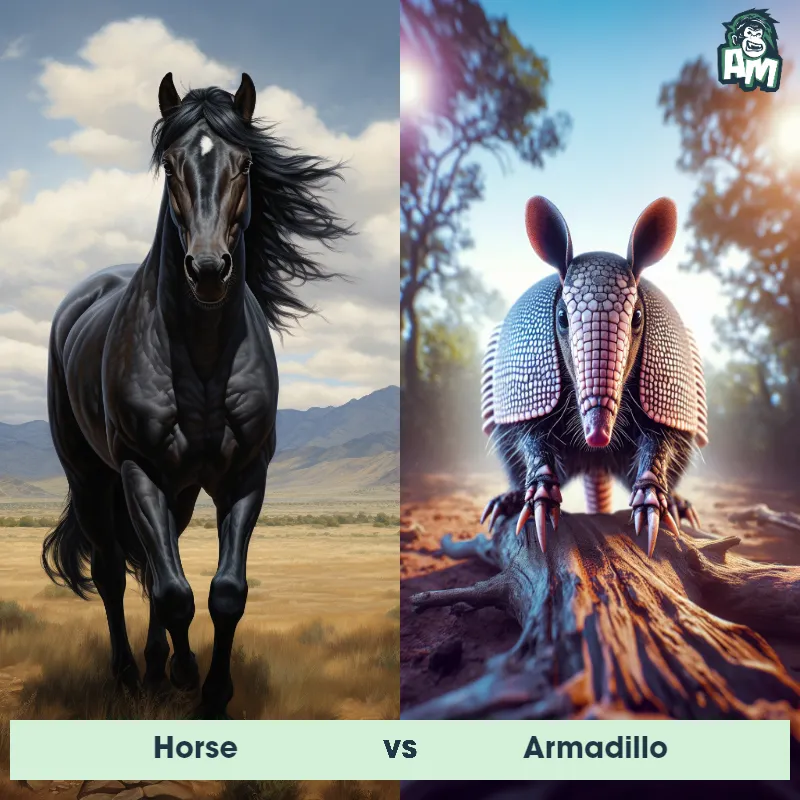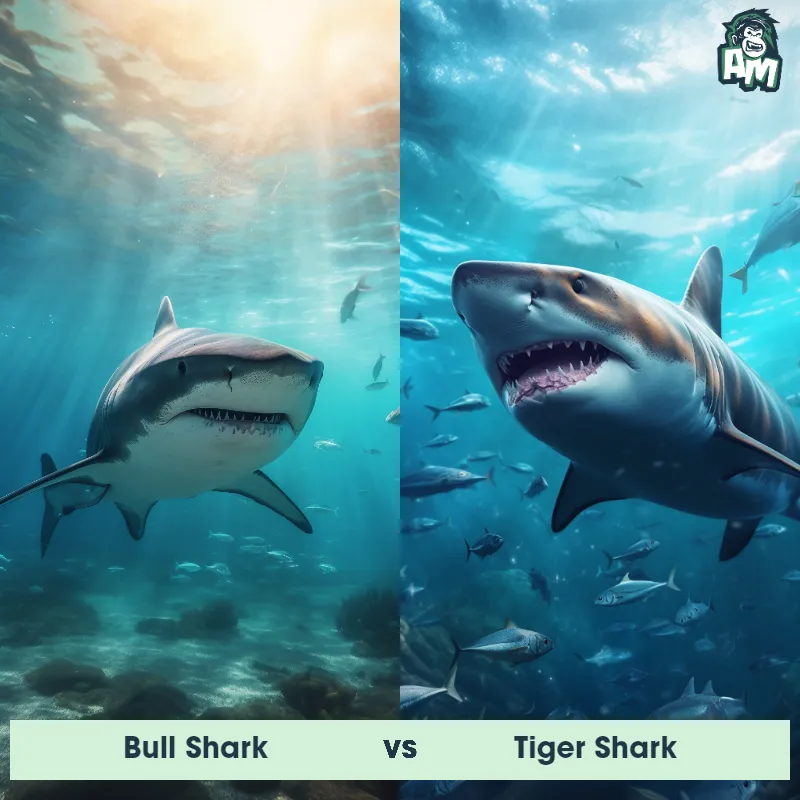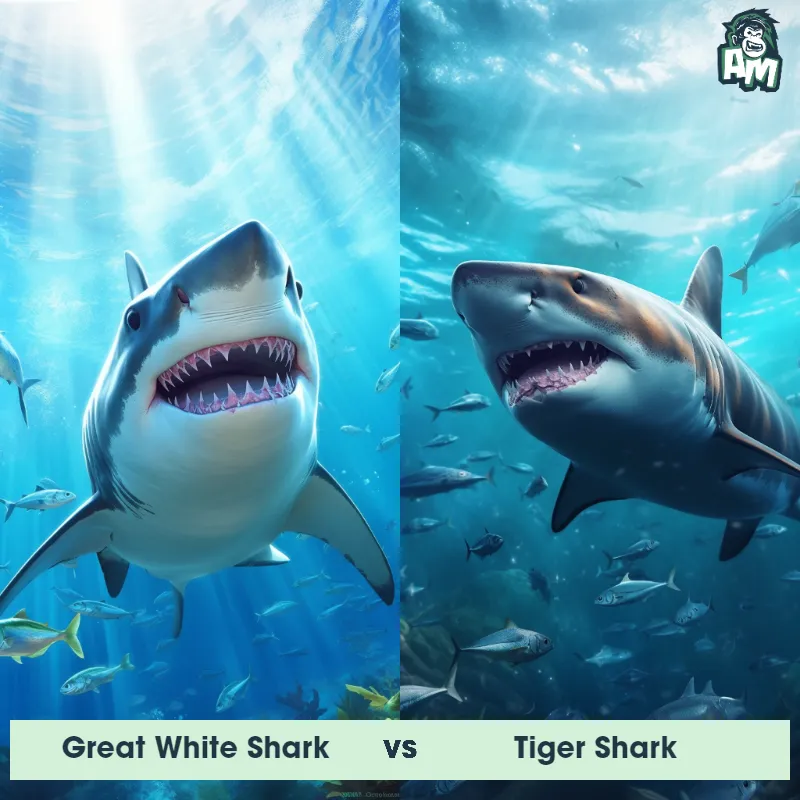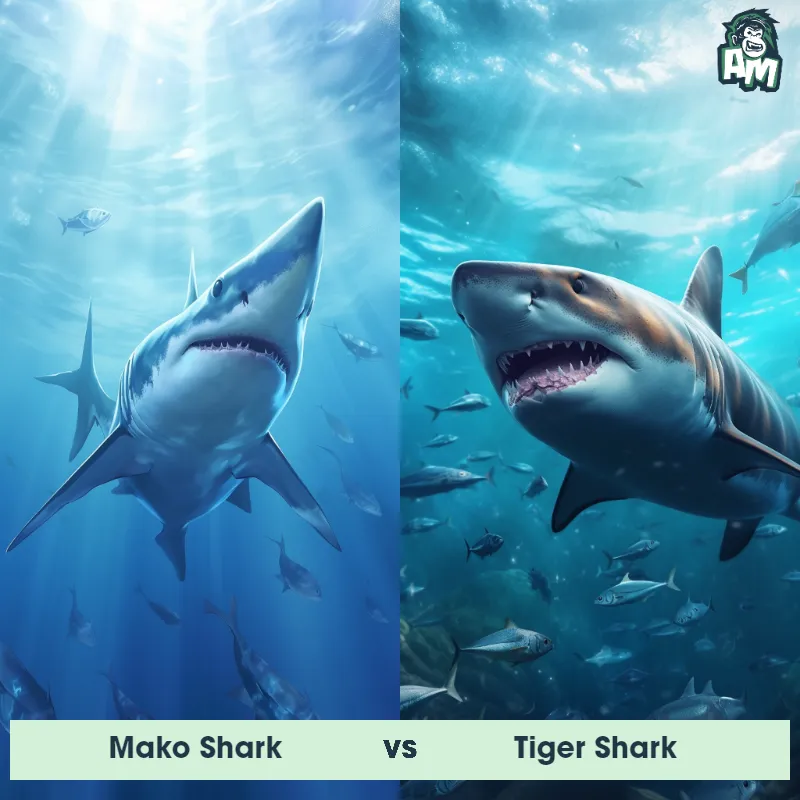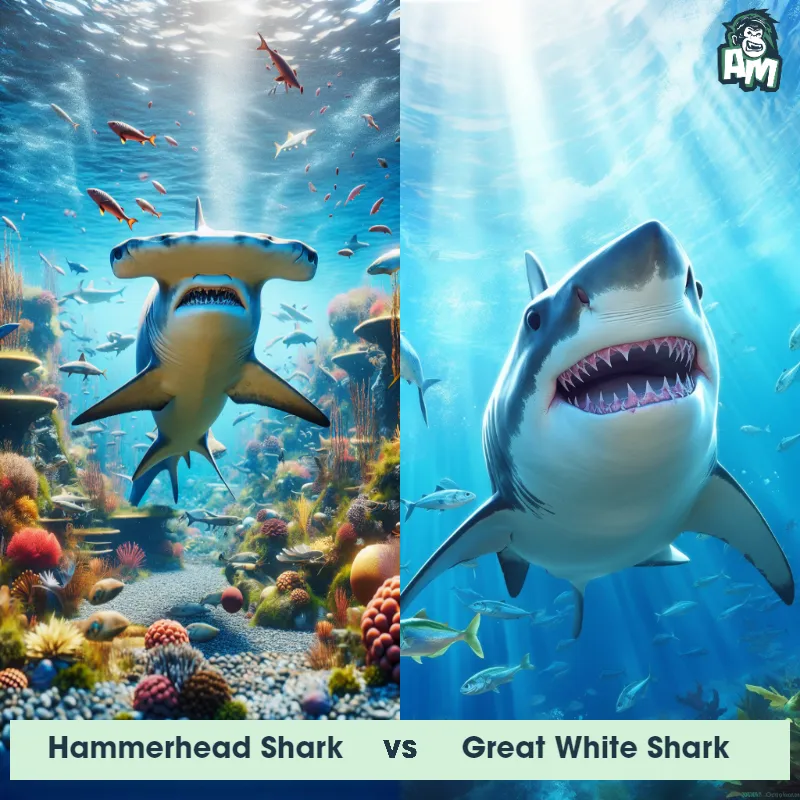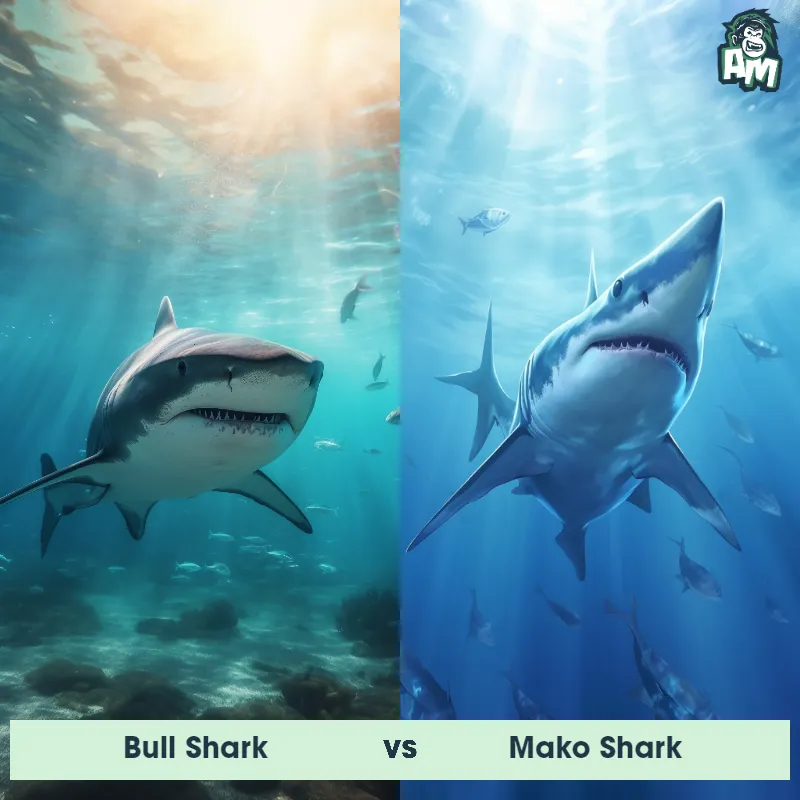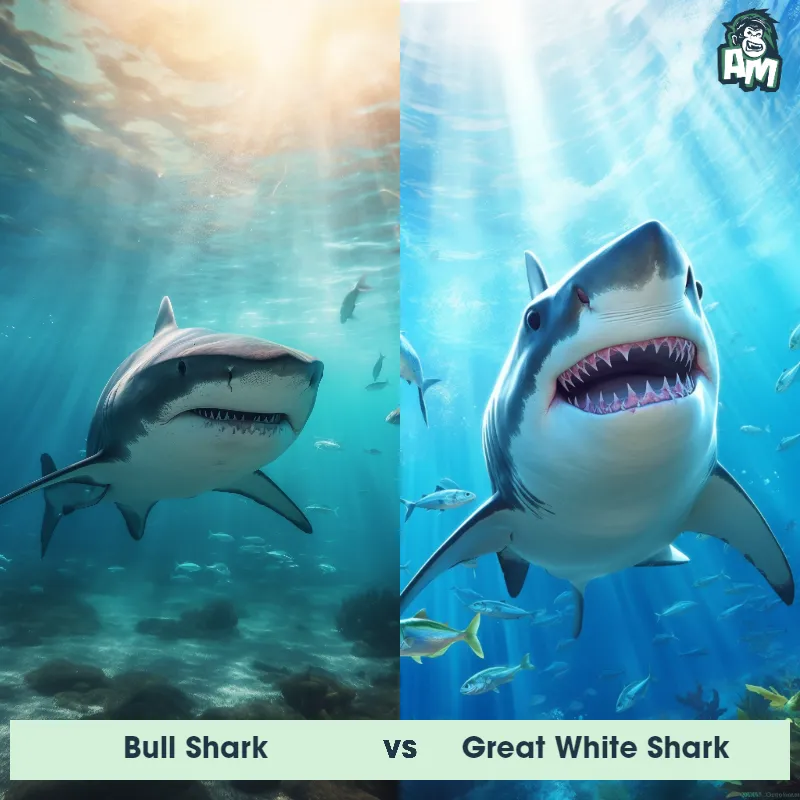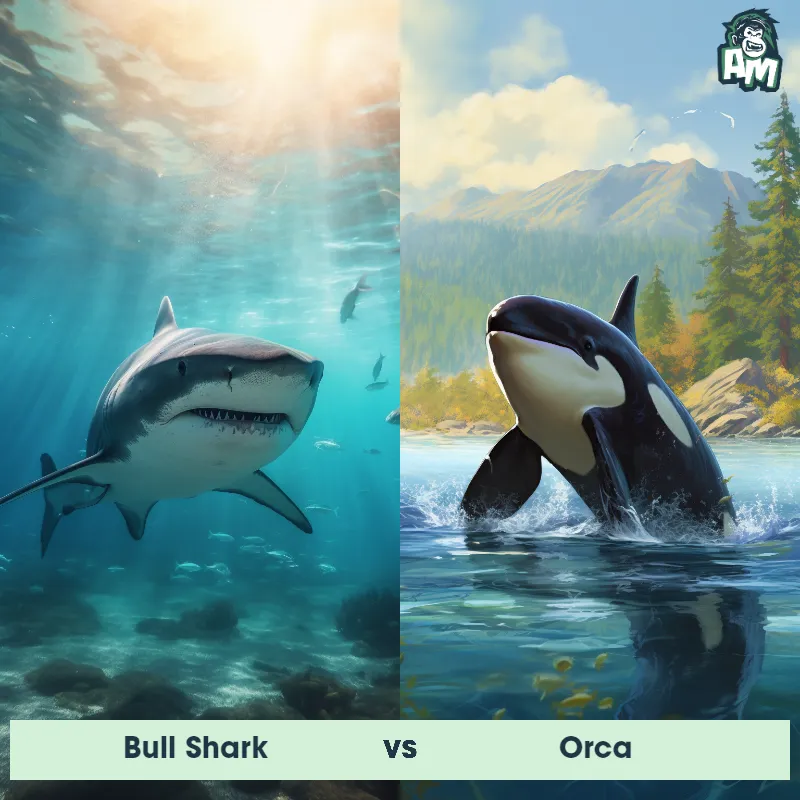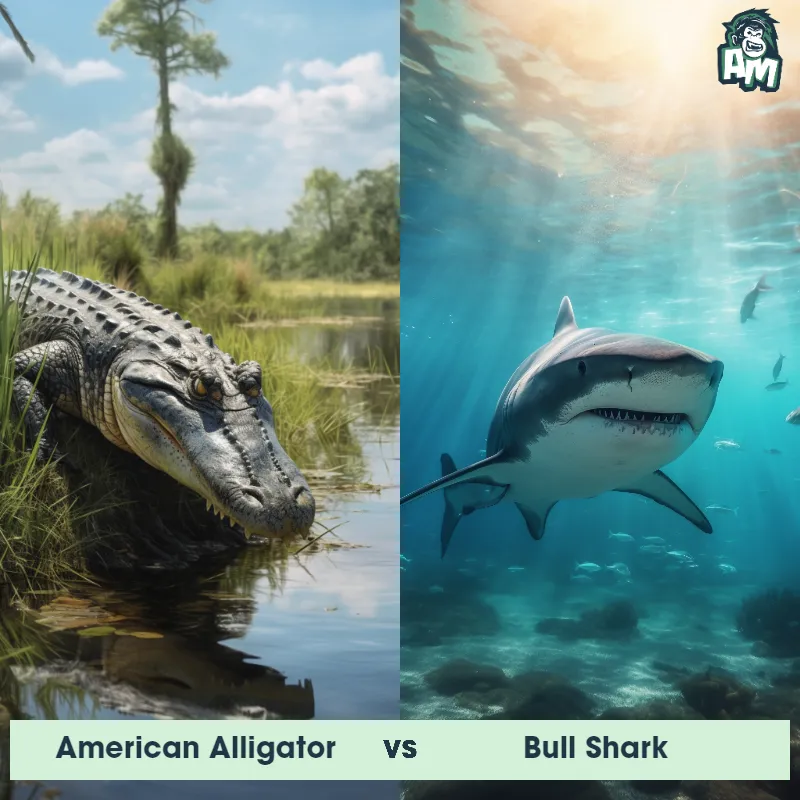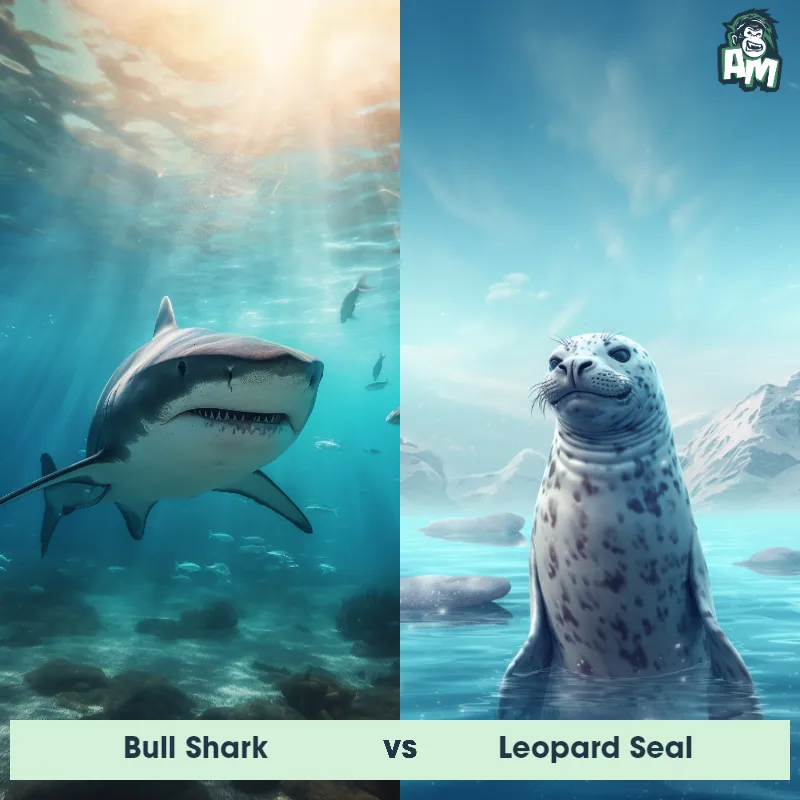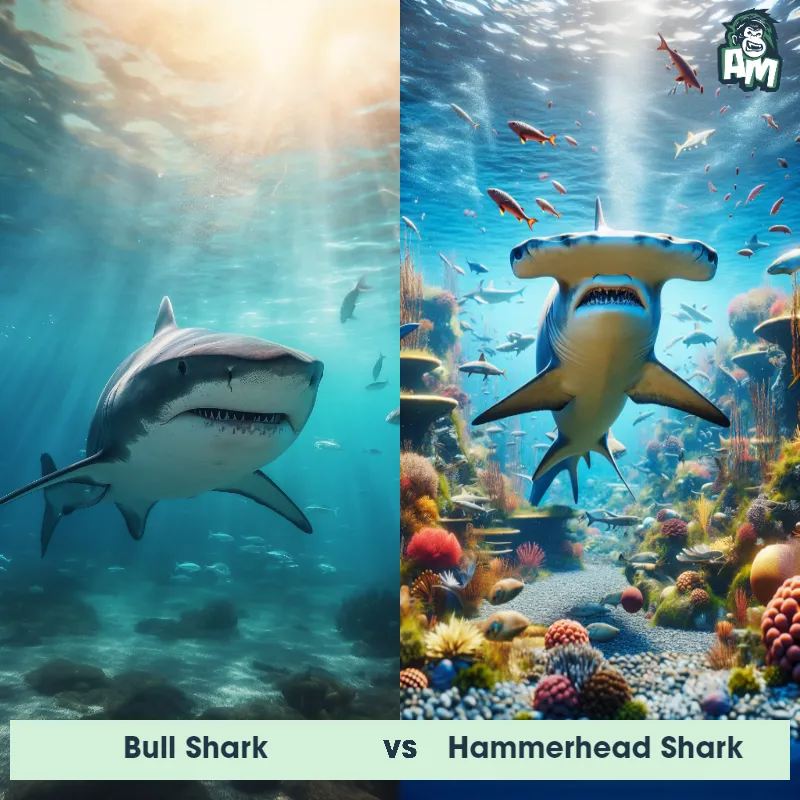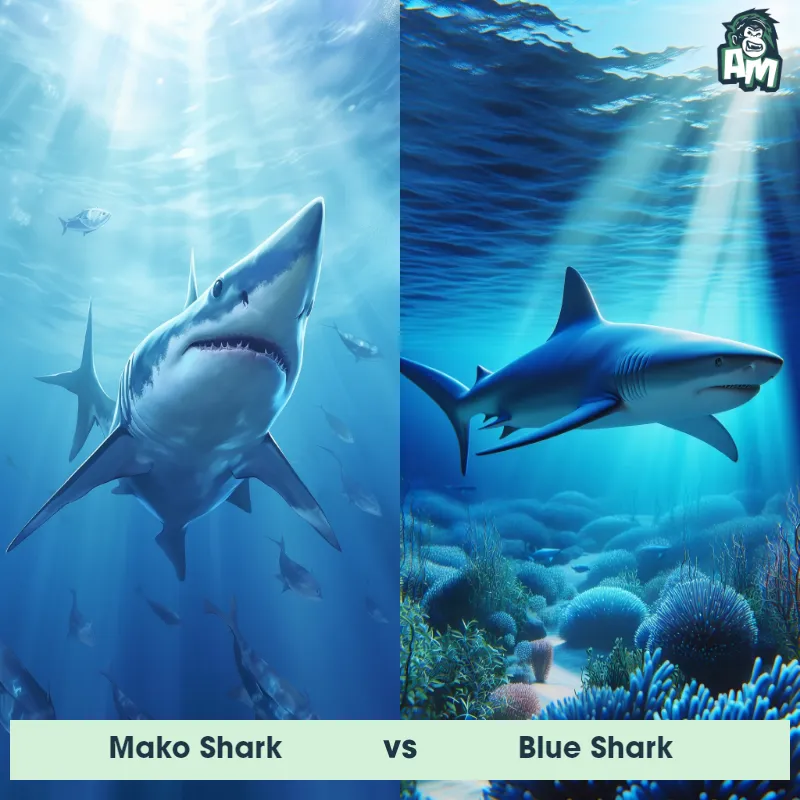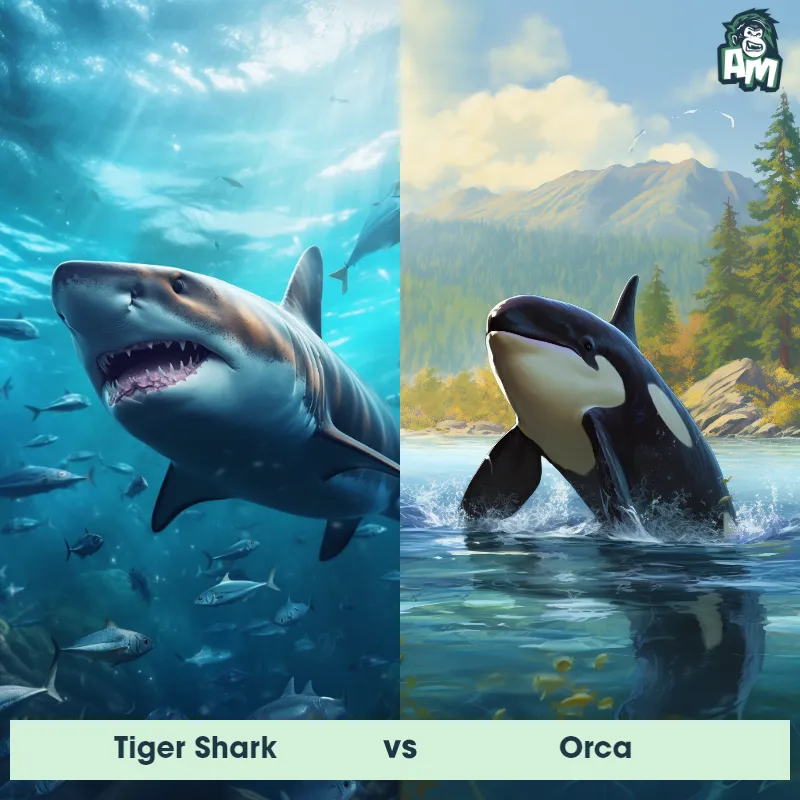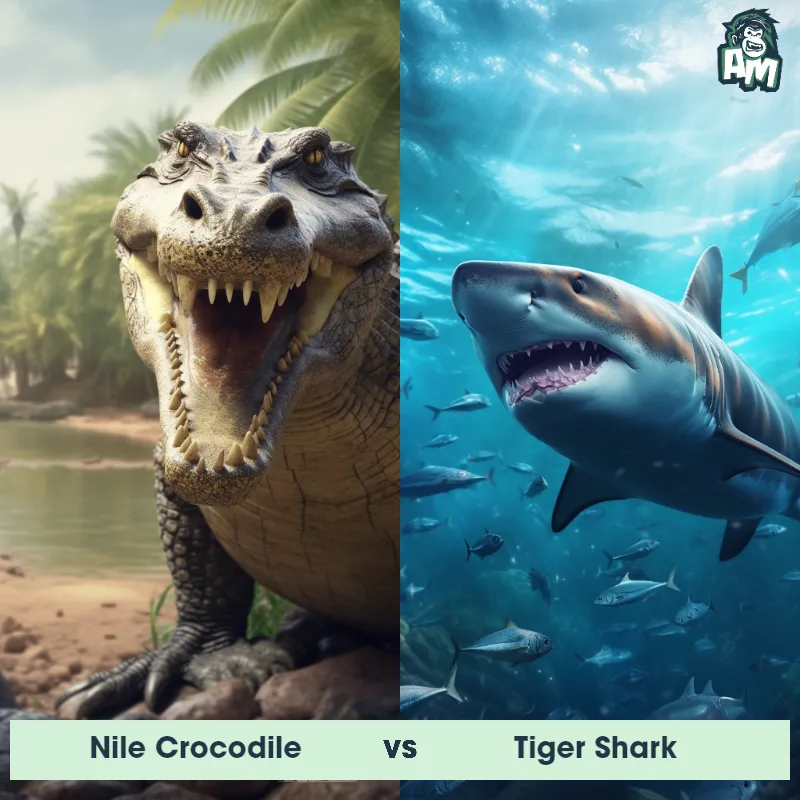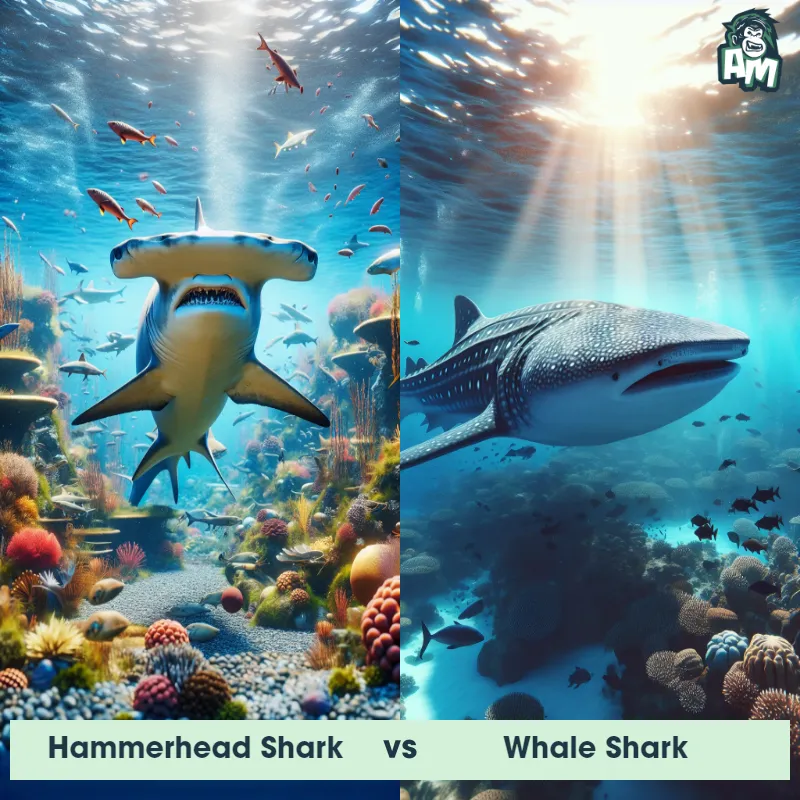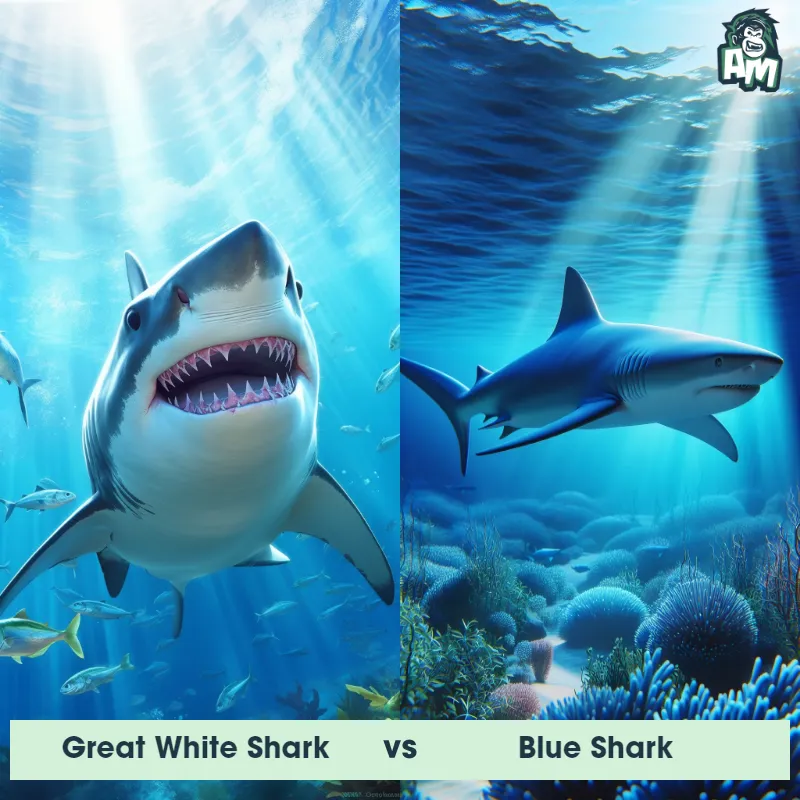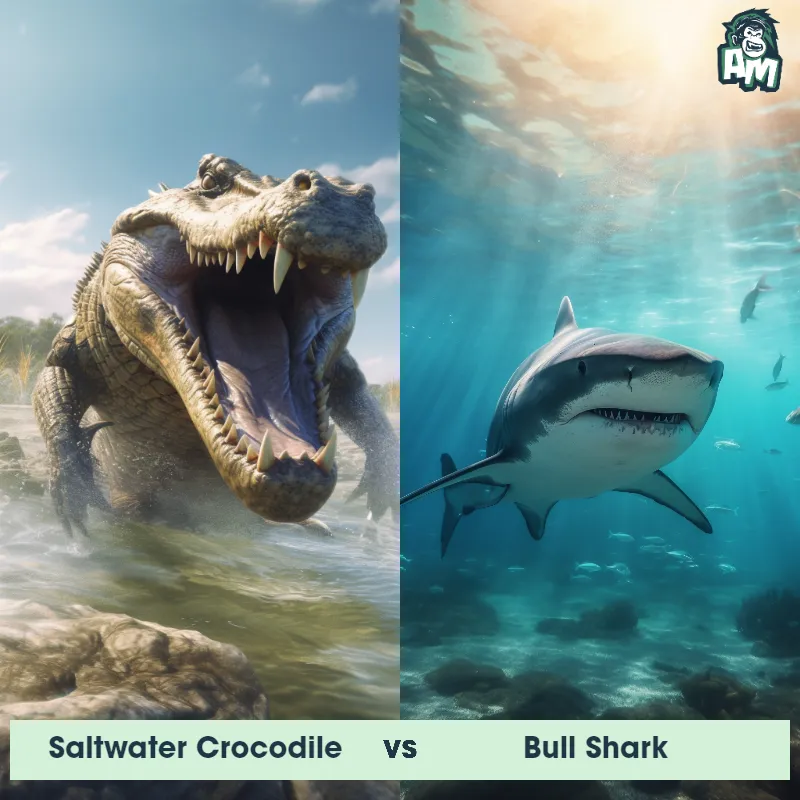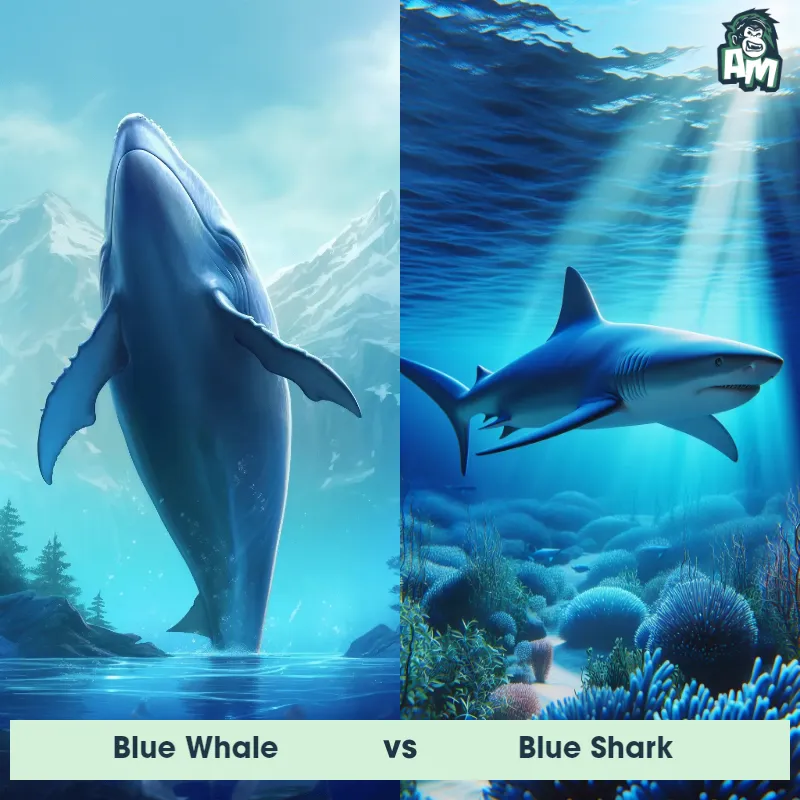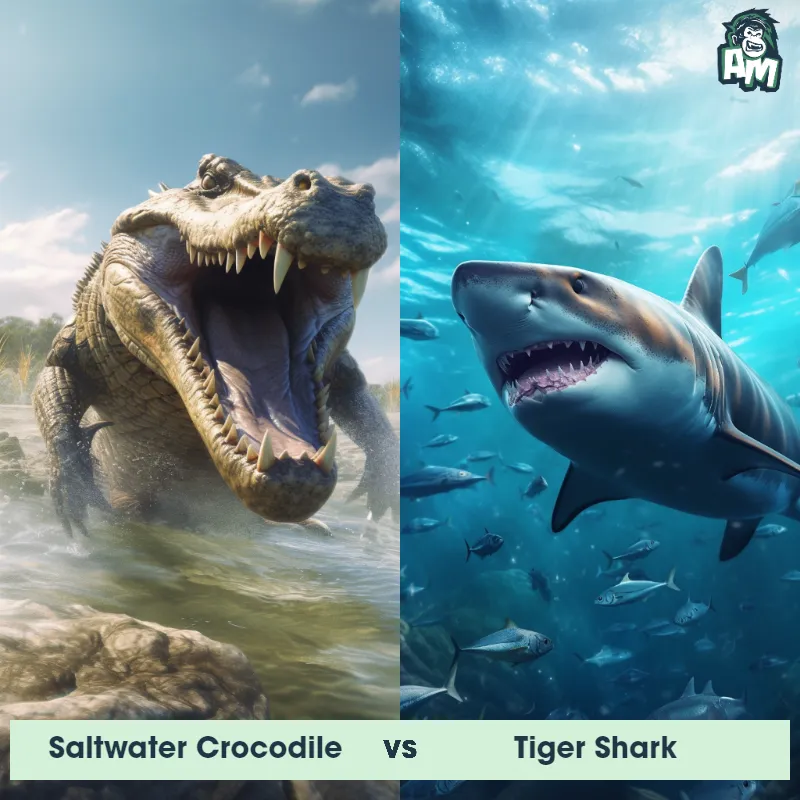Hammerhead Shark vs Tiger SharkSee Who Wins

Ladies and gentlemen, today we plunge into the depths of the ocean for a clash of the titans! On one side, we have the Hammerhead Shark, known for its unique head shape and 360-degree vision. On the other, the formidable Tiger Shark, a true apex predator with a reputation for its voracious appetite and powerful bite. As the waves ripple and the tension mounts, let's dive into this underwater showdown!
Contender 1: Hammerhead Shark
The Hammerhead Shark, also known as the Great Hammerhead, is a large shark species that can grow up to 20 feet in length and weigh up to 1,000 pounds. Its most distinctive feature is its wide, flattened head that resembles a hammer, which is used to detect prey buried in the sand. They have a gray-brown coloration and a streamlined body that allows them to swim quickly through the water. Hammerhead Sharks are found in warm waters around the world and are known to be solitary hunters.
Fun Fact: Hammerhead Sharks have a unique hunting strategy where they use their wide head to pin down stingrays and other prey against the ocean floor, making it easier to eat them.
Contender 2: Tiger Shark
The Tiger Shark, also known as Galeocerdo cuvier, is a large predatory shark that can grow up to 18 feet in length and weigh over 1,400 pounds. It is named for its distinctive striped pattern on its back, which fades as the shark ages. Tiger Sharks have a broad, flat head and powerful jaws filled with serrated teeth that can easily crush through the shells of sea turtles and clams. They are found in warm waters around the world and are known for their voracious appetite and ability to eat almost anything, including garbage and even other sharks.
Fun Fact: Tiger Sharks have a unique hunting strategy where they will bump into their prey before attacking, a behavior known as "bump and bite."
Matchup Stats
| Hammerhead Shark | Tiger Shark | |
|---|---|---|
| Size | Up to 20 feet (6.1 meters) | Up to 18 feet (5.5 meters) |
| Weight | Up to 1,000 pounds (453.6 kilograms) | Over 1,400 pounds (635 kilograms) |
| Speed | Speed: 25 mph (40 km/hr) | Speed: 20-30 mph (32-48 km/hr) |
| Key Strength | Powerful bite and strong swimming ability | Powerful jaws and teeth |
| Biggest Weakness | Vulnerable to attacks on the sides of its body | Vulnerable to attacks on the gills |
Current Votes
Hammerhead Shark vs Tiger Shark
See Who Wins
Matchup Videos
All of our videos contain verified footage of natural encounters between the Hammerhead Shark and the Tiger Shark. These are true sightings and observations filmed by tourists, scientists, and wildlife documentarians.View More Matches
Looking For More?
Similar Matches
Scientific Stats
| Hammerhead Shark | Tiger Shark | |
|---|---|---|
| Scientific Name | Sphyrnidae | Galeocerdo cuvier |
| Family | Sphyrna | Carcharhinidae |
| Habitat | Saltwater | Warm waters |
| Geography | Warm waters around the world | Found worldwide |
| Diet | Stingrays, fish, squid, octopus, crustaceans | Varied, including sea turtles, clams, garbage, and other sharks |
| Lifespan | 20 years - 30 years | 27 years - 50 years |
Key Differences between Hammerhead Shark and Tiger Shark
- Fin shape: The dorsal fin of a Hammerhead Shark is tall and curved, resembling a hammer, while the dorsal fin of a Tiger Shark is more traditional in shape, being taller at the front and tapering towards the back.
- Eye placement: The eyes of the Hammerhead Shark are located on the outer edges of its hammer-shaped head, providing a wider field of vision. In contrast, the Tiger Shark has more conventional eye placement closer to the center of its head.
- Size: Hammerhead Sharks are generally smaller, with an average length of 13-20 feet, while Tiger Sharks can grow larger, reaching lengths of up to 18 feet.
- Coloration: Hammerhead Sharks typically have a grayish-brown or olive-colored body, while Tiger Sharks have a unique pattern of dark, vertical stripes on a lighter background, resembling a tiger's stripes.
- Head shape: Hammerhead Shark has a distinct hammer-shaped head, while the Tiger Shark has a more traditional, pointed head.
- Body shape: Hammerhead Sharks have a slender body with a distinctive, flattened head, while Tiger Sharks have a more robust and cylindrical body shape.








